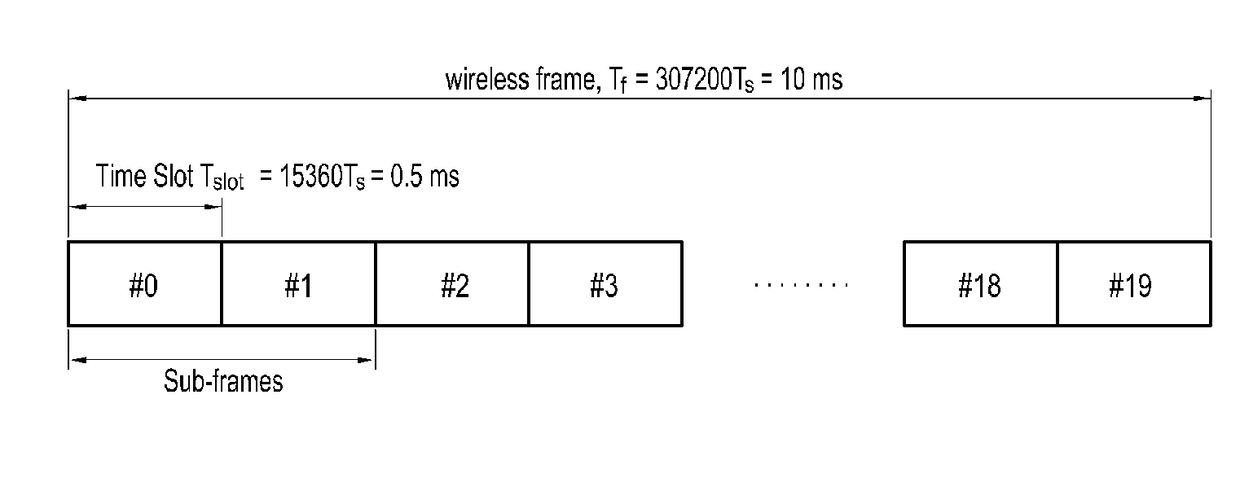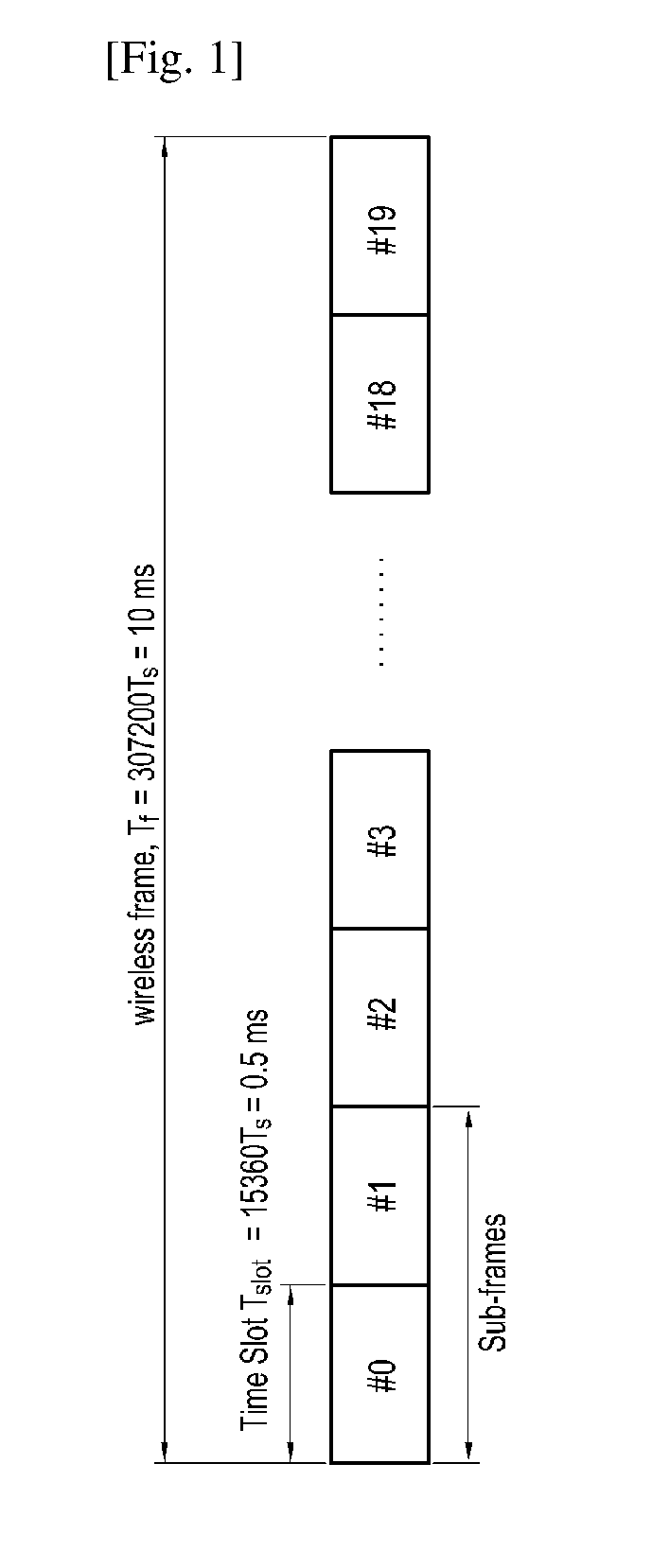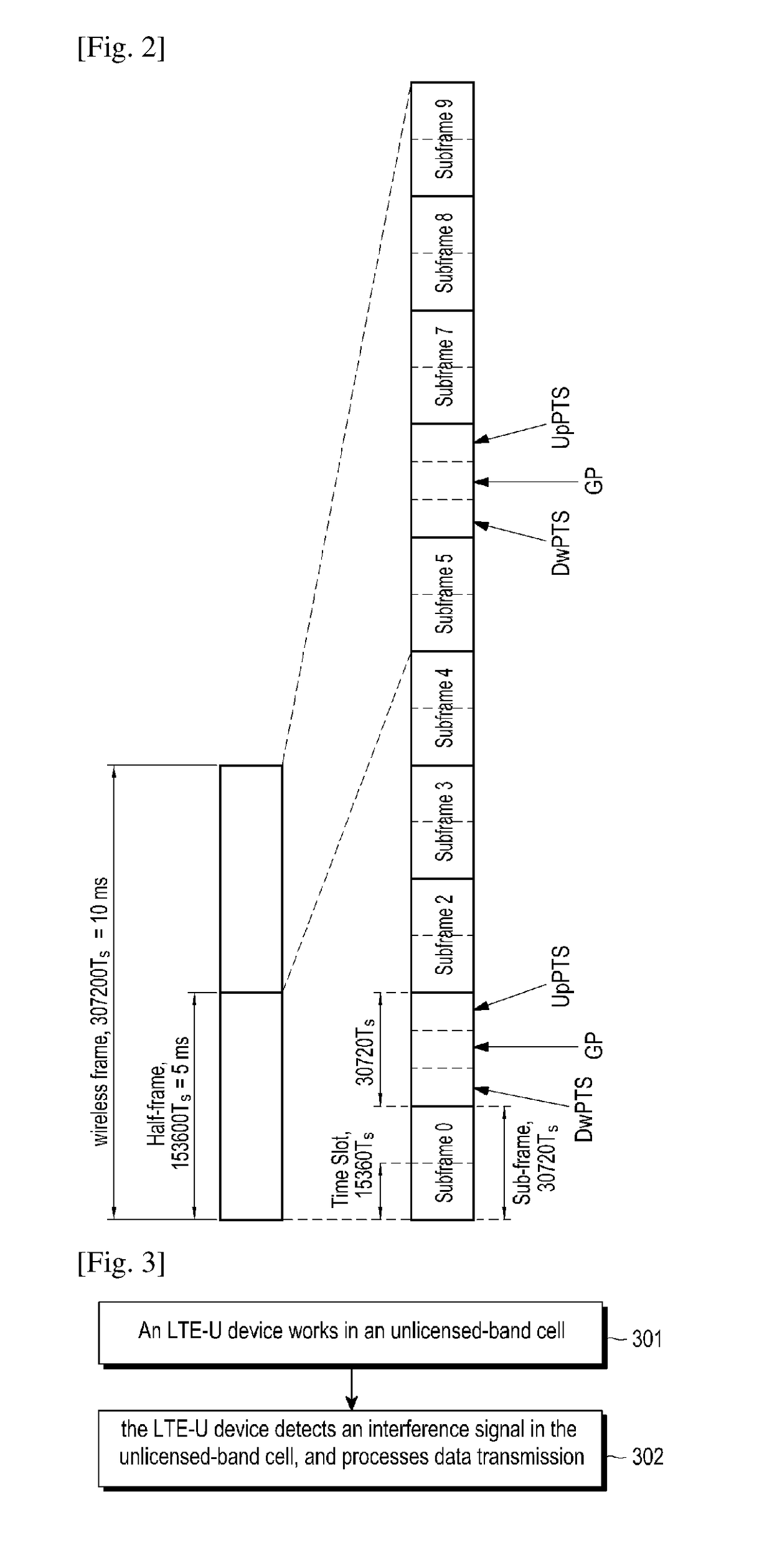Method and device for interference detection on unlicensed band
a technology of interference detection and unlicensed band, applied in the field of wireless communication technologies, can solve the problems of difficult to ensure the quality of service for transmitting data in the lte system, and the inability to avoid interference of the lte system in the unlicensed band
- Summary
- Abstract
- Description
- Claims
- Application Information
AI Technical Summary
Benefits of technology
Problems solved by technology
Method used
Image
Examples
first embodiment
A First Embodiment
[0050]According to a WiFi system specification of the 802.11 family, a WiFi signal is sent on an entire system bandwidth, i.e., powers distributed on different frequencies in the system bandwidth are equal. In order to detect a possible WiFi signal, the LTE-U device may not necessarily detect the interference signal on all subcarriers of the entire system bandwidth in the LTE-U cell. The LTE-U device detects the interference signal merely on some carriers of the entire system bandwidth, and then a property of the WiFi interference signal can be reflected. Or, given that subcarrier division of the WiFi signal is not consistent with that in the LTE-U cell, the interference signal may be detected on all the subcarriers of the entire system bandwidth.
[0051]In order to detect the interference signal, some resources for detecting interference may be allocated. In an orthogonal frequency division multiplexing (OFDM) symbol, the interference detecting resource may occupy a...
second embodiment
A Second Embodiment
[0076]The WiFi system usually defines the channel center frequencies on the unlicensed band according to an interval of 5 megahertz (MHz), but the channel bandwidth of the WiFi signal is usually 20 MHz, so, for a LTE-U cell, the WiFi signal may be received with multiple working frequencies that are not completely overlapped. On a WiFi channel bandwidth, the WiFi signal is sent on the entire system bandwidth, i.e., a relationship between signals sent by different STAs is a time division multiplexing relationship. In other words, at a time, the power of a WiFi signal is distributed uniformly on the entire WiFi system bandwidth.
[0077]In addition, both the LTE-U system and the WiFi system may occupy 20 MHz channel bandwidths, but system bandwidths that they actually occupied are different. FIG. 5 is a structure diagram of a WiFi bandwidth provided by an embodiment of the present invention. Taking 802.11a as an example, a WiFi channel bandwidth is 20 MHz, but a system ...
third embodiment
A Third Embodiment
[0084]According to the 802.11 specification, the WiFi system usually defines channel center frequencies based on an interval of 5 MHz. For a WiFi system signal of a specific channel bandwidth such as a 20 MHz channel bandwidth, the WiFi signal is sent on the entire system bandwidth, the relationship between the signals sent by different STAs is the time division multiplexing relationship. FIG. 6 is a structure diagram of a WiFi bandwidth provided by an embodiment of the present invention. Using the 802.11a as an example, there is a guard band of 3.4 MHz between two neighboring 20 MHz channel bandwidths, which is equivalent to frequency domain width of 19 PRBs of the LTE system. Practically, the WiFi system does not transmit a useful signal on the frequency of the guard band, so there is only a leakage power from the WiFi useful signal on the guard band. In addition, because the WiFi system divides a channel center frequency based on an interval of 5 MHz, possibly t...
PUM
 Login to View More
Login to View More Abstract
Description
Claims
Application Information
 Login to View More
Login to View More - R&D
- Intellectual Property
- Life Sciences
- Materials
- Tech Scout
- Unparalleled Data Quality
- Higher Quality Content
- 60% Fewer Hallucinations
Browse by: Latest US Patents, China's latest patents, Technical Efficacy Thesaurus, Application Domain, Technology Topic, Popular Technical Reports.
© 2025 PatSnap. All rights reserved.Legal|Privacy policy|Modern Slavery Act Transparency Statement|Sitemap|About US| Contact US: help@patsnap.com



